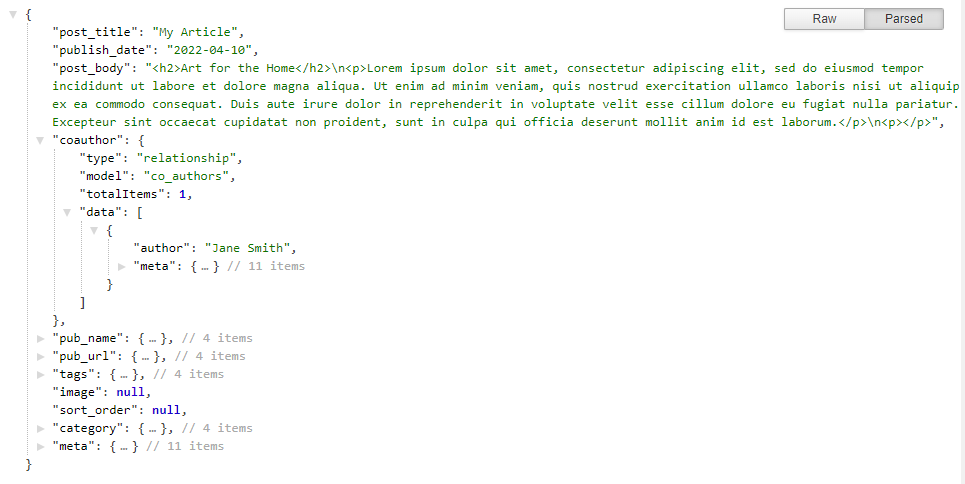Headless & Hybrid toJSON
When using both Headless and Hybrid WebEngine Modes, an additional JSON method becomes available: toJSON.
To aid in the consumption of content the toJSON endpoint is available in both Headless and Hybrid WebEngine Modes. The endpoint will render an object containing a content item's meta, stored and related data when /?toJSON is applied to the end of the established URL routing of the item.
For example: https://www.mydomain.com/blog/my-article/?toJSON
The URL routing utilizes the established route configured for the content items view. It can be added to live or preview branch URLs. However, when accessing the content for production using the live branch is the best practice to ensure that only live published content is rendered.
Content Output
The content item's fields and their contents will render in key-value pairs. Related content obtained through One-to-One or One-to-Many fields will render as a sub-object with a corresponding data array. The data array will include hydrated objects of the related items. For example, below the coauthor field is a One-to-One relational with the selected items data object.
toJSON object with One-to-One relational JSON output

The content hydration level of the returned object has a default depth of three. The top-level is the first and two lower depth levels of related content. The hydration depth cannot be set via URL.
No Meta Option
The meta data provided in the object may not be necessary when consuming the content. These can be removed before the object is returned by adding a nometa query parameter value to the end of your URL.
For example: https://www.mydomain.com/blog/my-article/?toJSON=nometa
This will remove the meta data from the primary content item's rendering and the related items' objects as well.
Updated almost 2 years ago
